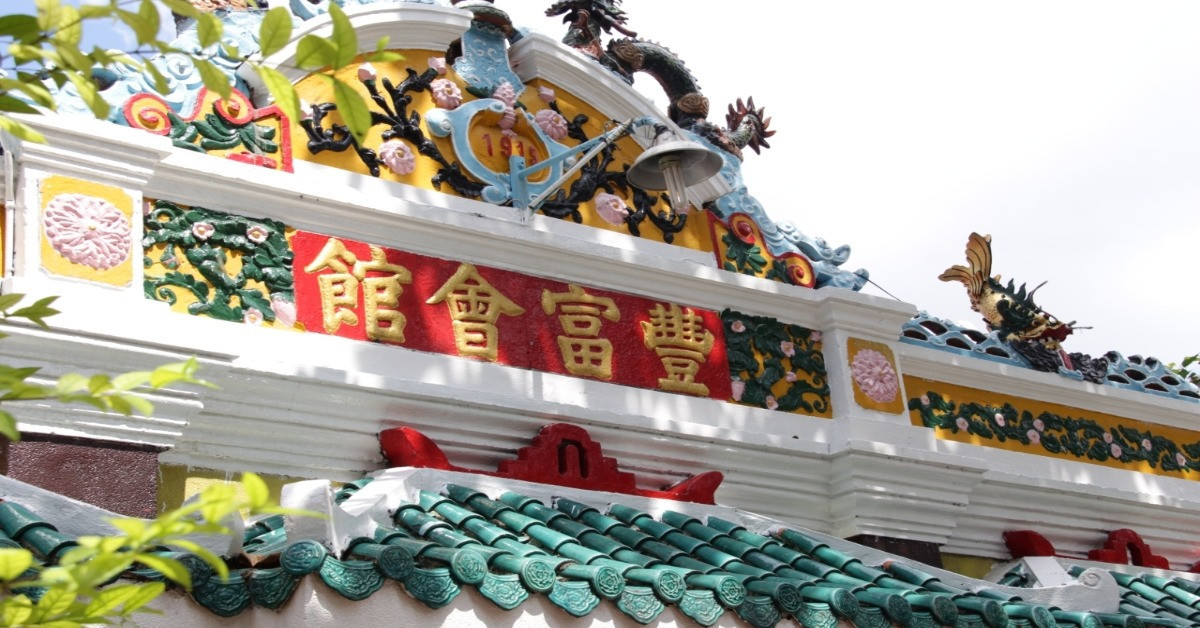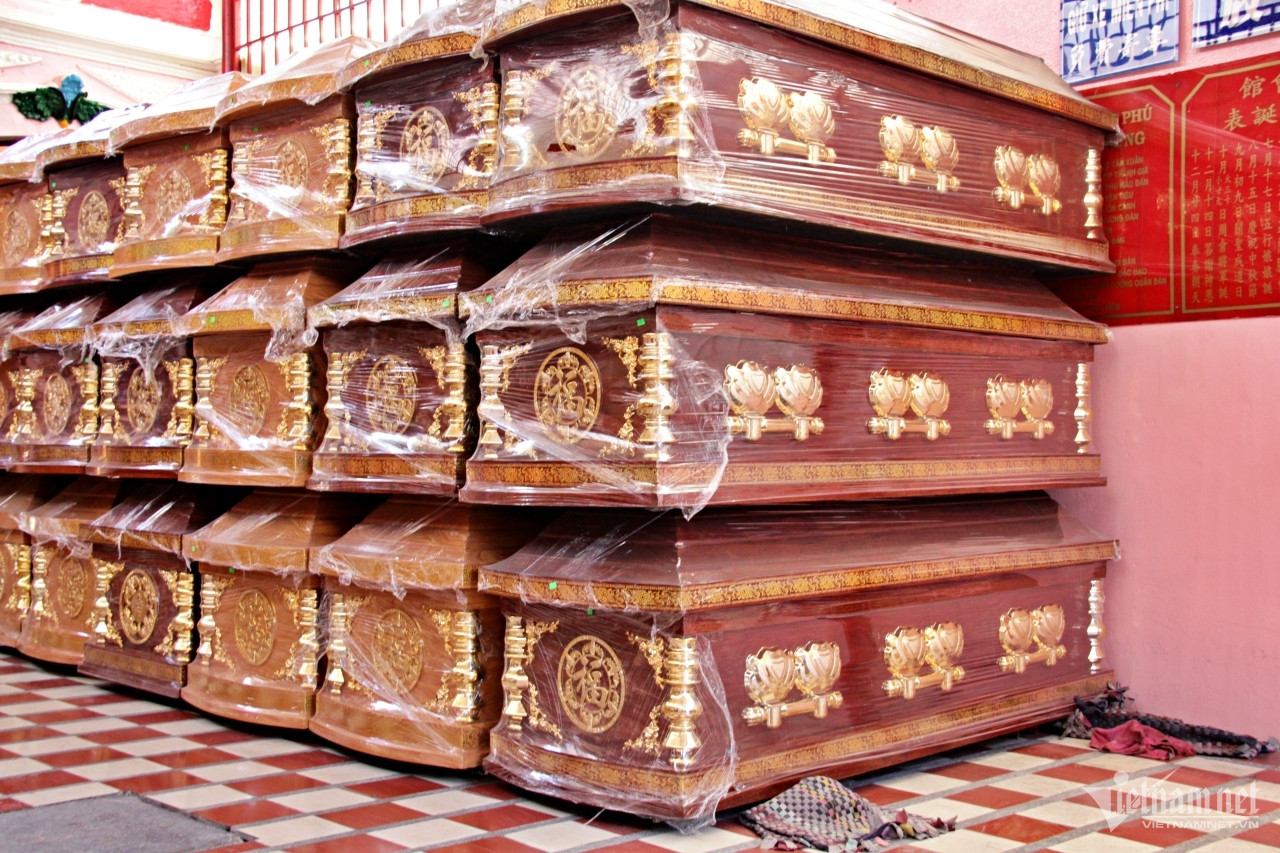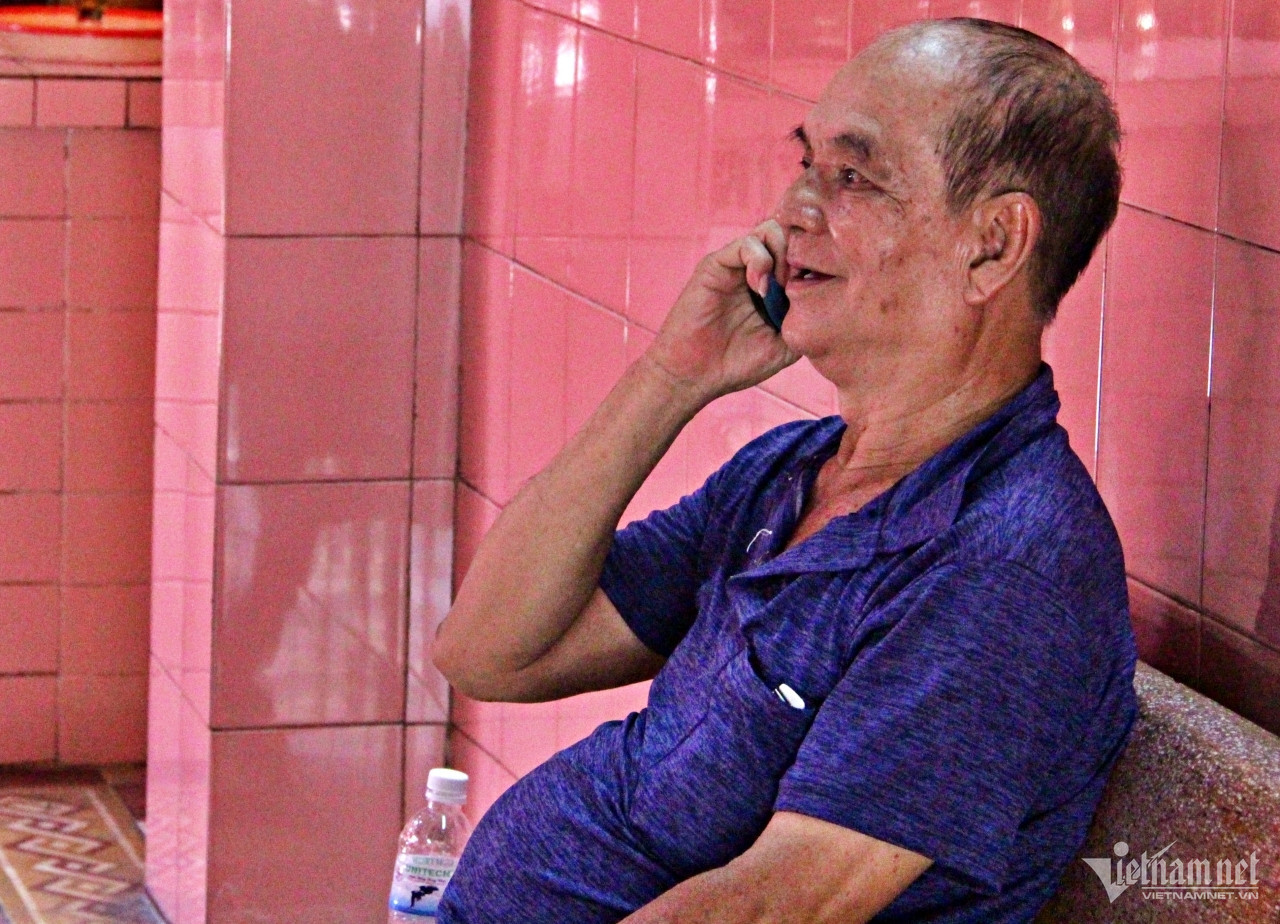
A century-old communal house
Taking advantage of his lunch break, Mr. Lam De, Secretary of the Phong Phu communal house association (District 8, Ho Chi Minh City), added bottles of filtered water to an icebox. This water is provided free of charge to visitors of the communal house.
Every day, the small communal house welcomes many locals who come to burn incense and pray for health and a peaceful life.
According to information at the communal house, Phong Phu communal house was built around the beginning of the 18th century. At that time, it was located on the bank of Doi canal. In 1917, the communal house was moved to its current location on Phong Phu street.
To date, the communal house has a history of nearly 200 years. Despite this, it still retains the ancient architecture characteristic of Southern communal houses. The main hall is a five-room wooden structure with a tiled roof that exudes an old-world charm.

The communal house worships gods according to local beliefs, including Thanh Hoang Than Bon Canh, Chu Sinh Nuong Nuong, Quan Thanh De Quan, and Phuc Duc Chinh Than.
In April 2009, Phong Phu communal house was designated an architectural and artistic relic by the People's Committee of Ho Chi Minh City.
The custom of coffin donations
Mr. Lam De explained that visitors also come to Phong Phu communal house to perform the custom of "thi hom," a practice of the Chinese people of Chaozhou origin. "Thi" here means giving, charity, and helping the needy.
“Thi hom” (coffin donation), understood as a form of raising money to buy coffins for poor families who cannot afford funeral expenses, began in the 1980s. Wealthy members of the communal house initially created a fund to buy coffins, and as the practice became known, more people voluntarily participated and contributed.

Now, visitors to the communal house can participate in offering coffins, regardless of their background, depending on their generosity.
The representative of the management board of Phong Phu communal house stated that each coffin costs nearly 2 million VND. "Coffin donors" can contribute amounts ranging from 50,000 VND to several million VND, depending on their ability.
When enough funding is collected, the communal house buys about 180 coffins. These coffins are arranged in two rows in the room on the right side of the main hall, with additional coffins stored in a house opposite the communal house.
Though located in District 8, the donation of coffins extends to all provinces. Individuals and organizations requesting coffins need only present a death certificate and confirmation of difficult circumstances from the locality to receive support.
In addition to donating coffins, the communal house has established a burial team to support other free procedures, such as embalming and burial, for the deceased.
Mr. De shared: “We not only give coffins to the deceased from poor families, but also arrange coffins for people who have died without relatives when the government contacts us. We give away about 400 coffins a year, carefully verifying the circumstances to prevent misuse.”
A tradition of compassion


Mr. De, who has been involved with the communal house and the coffin donation custom for many years, has witnessed many poignant stories. Some families, burdened by poverty, struggle to afford coffins for their deceased loved ones. When they hear about the communal house’s coffin donation practice, they come with gratitude.
Many beneficiaries return to the communal house to express their thanks by donating coffins on special occasions. Others, moved by the custom's humanity, also volunteer to participate.
“Many non-Chinese people come to the communal house to pray for health and peace. They see the coffins and learn about the custom, then decide to contribute. Every year, they come to offer prayers and donate money for coffins to help the poor deceased,” Mr. Lam De shared.
By Ha Nguyen